There is almost nothing as tasty bas a good steak! There are many cuts of beef to choose from when it comes to steak. One of the lesser known to many is Bavette Steak, also known as Flap Steak. This cut of beef comes from the bottom sirloin area of a cow and its full of flavor.
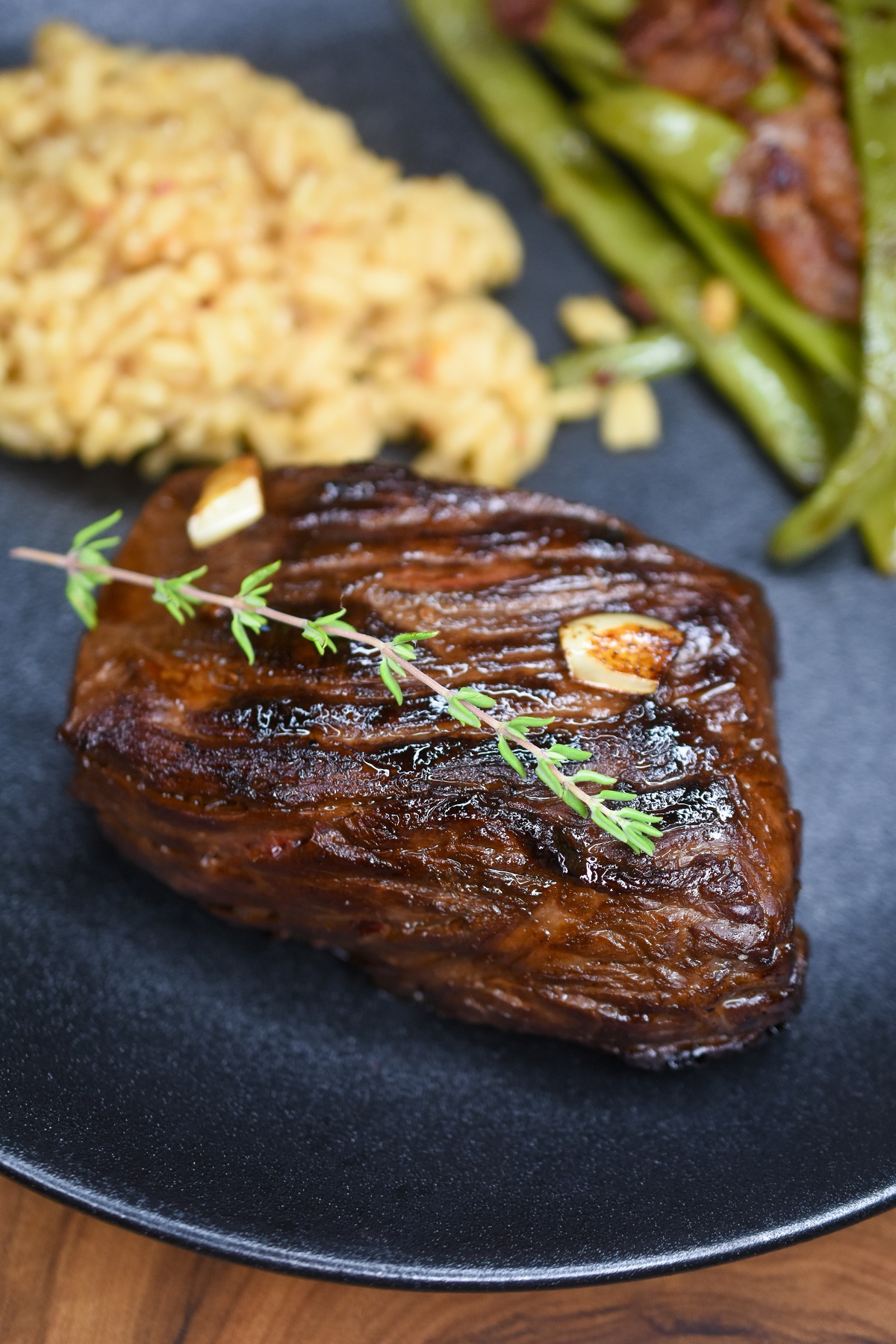
I enjoy trying every cut of beef I can, you never know which will end up being a favorite. For example, my family had never heard of cube steak (I was born and raised in Philadelphia, Pennsylvania), until I was on a farm tour in Idaho and the hosts taught us how to make Finger Steaks (which I also never heard of at the time). That cut of steak has now become a favorite of my oldest.
Bavette is also referred to as Flap Steak. I think it just depends on which country or area of the U.S. you are in... as to what people call it. If London Broil is your favorite cut, I have a great London Broil Marinade recipe for you to try.
Table of Contents
What is Bavette Steak (also called Flap Steak)?
- Bavette Steak also called Flap Steak, Beef Bavette or Bavette de Boeuf in France is a leaner cut of beef cut from the bottom sirloin area of a cow. Not to be confused with flank steak which is cut from the abdominal muscle area of the cow (below where flap steak / bavette steak is cut from). When cooked correctly, Bavette Steak is more tender and has a richer beef flavor than flank steak.
- Popular in France, Argentina and becoming more popular in the U.S. Bavette is prized by butchers, often referred to as Butcher's Cut Steak.
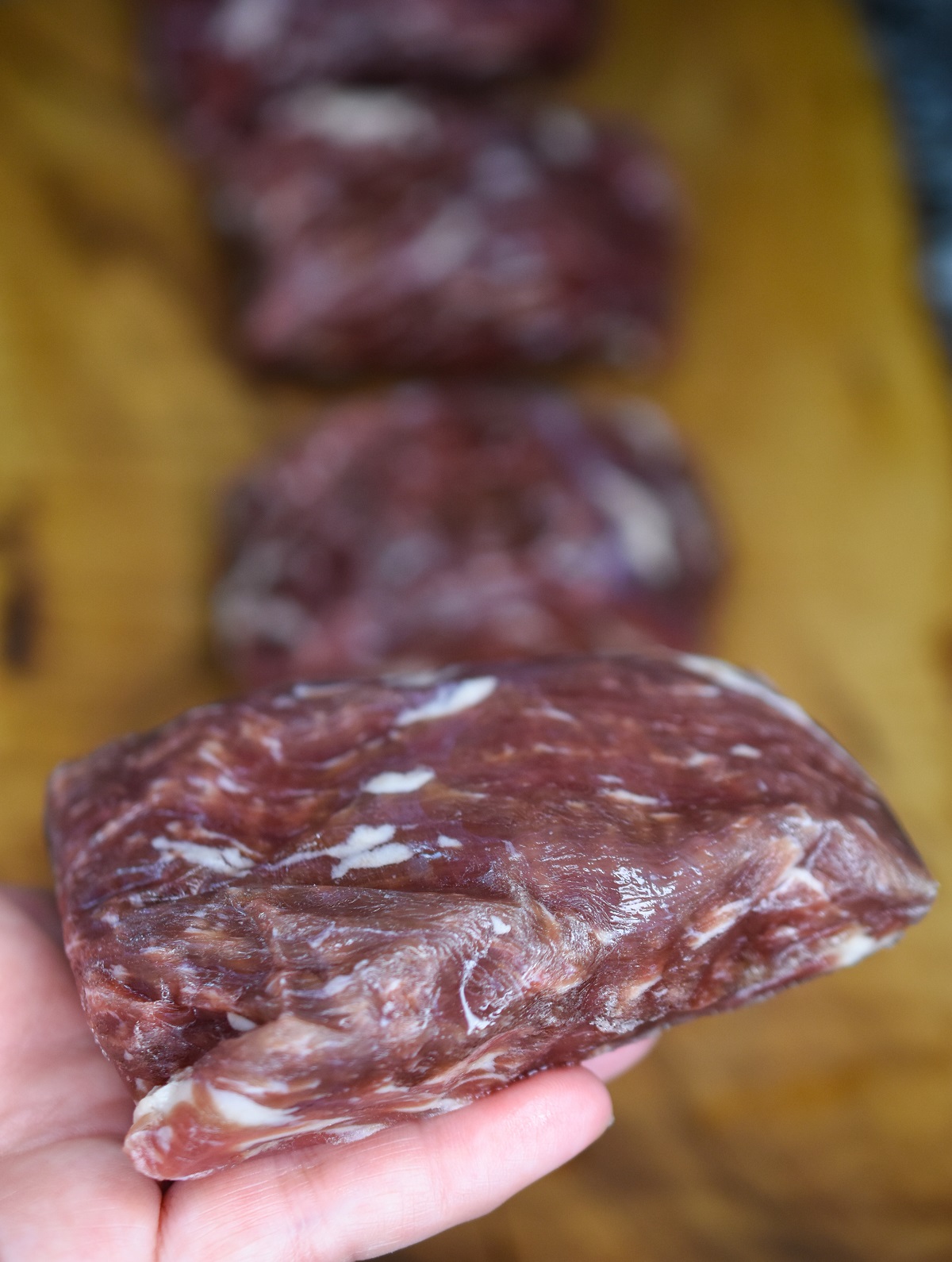
What Does Bavette Taste Like?
Rich and beefy. Tender if cooked and cut correctly against the grain.
Best way to cook Bavette Steak?
- Since Bavette Steak is a leaner cut of beef, you need to be careful when cooking it. This is one cut of meat you do not want to overcook. Bavette has less fat running through it, so you run the risk of it drying out if you don't cook it hot and fast.
- A hot and fast sear and a cook to rare, med-rare or medium is best. We like this best cooked Pittsburgh-medium. Which means its seared great on the outside and a nice crust forms while the inside leans med-rare.
Tips When Cooking Bavette Steak
- Bavette can benefit from marinating.
- For best results, allow steaks to sit on counter for 30 minutes to take the chill off and allow more even cooking.
- Season just before cooking.
- Use a cast iron or your heaviest pan (that gets the hottest).
- While cooking steak the muscles and fibers inside tense up, and much of the juices / liquid inside head towards the center of the meat.
- Since you want to cook this hot and fast, you definitely want to allow it to rest before cutting into it to allow the cook to finish (it will rise a few additional degrees internally), the meat to relax and the allow the juices to disburse back towards the edges of the steak. Resting allows it to become juicy throughout. All meat can benefit from resting, however its especially true with this cut of beef.
- Do not let steak "rest" IN the hot pan, remove them from the pan and place on plate(s).
- Cut against the grain. I recommend watching a YouTube video to ensure you understand what that means. Many cuts of steak are more enjoyable when cut against the grain. It really makes a difference!
- Overcooking this type of steak will result in chewy meat.
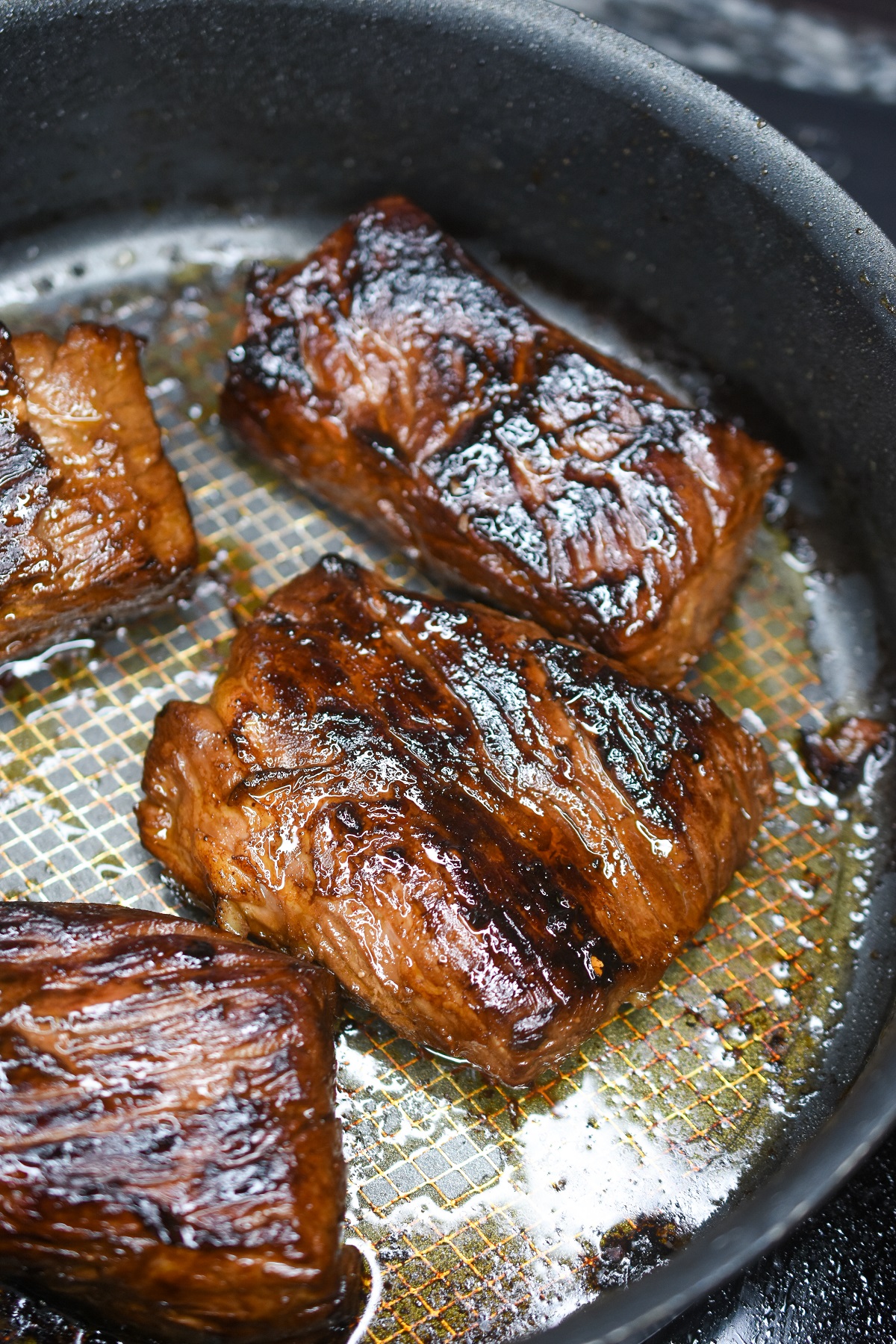
Other Uses
- This is a great cut of beef to use when making Steak Frites (found on many European menus), used for stir-fry's and fajita's, cooked and sliced for sandwiches (with an olive an blue cheese tapenade on a ciabatta roll or other nice crusty roll is delish!)
Nutrition
- A 6 oz. serving of Bavette Steak is approximately 200 calories, 10 grams of fat, 36 grams of protein and 0 carbs give or take based off of the cut(s) you happen to have. Source - MyNetDiary.com
- It's also a good source of Vitamin B6, Vitamin B12, Thiamin, Niacin and Phosphorus and Selenium.
Next time you are having a steak night, reach for a bavette steak for something different & delicious that won't break the bank. XO Colleen
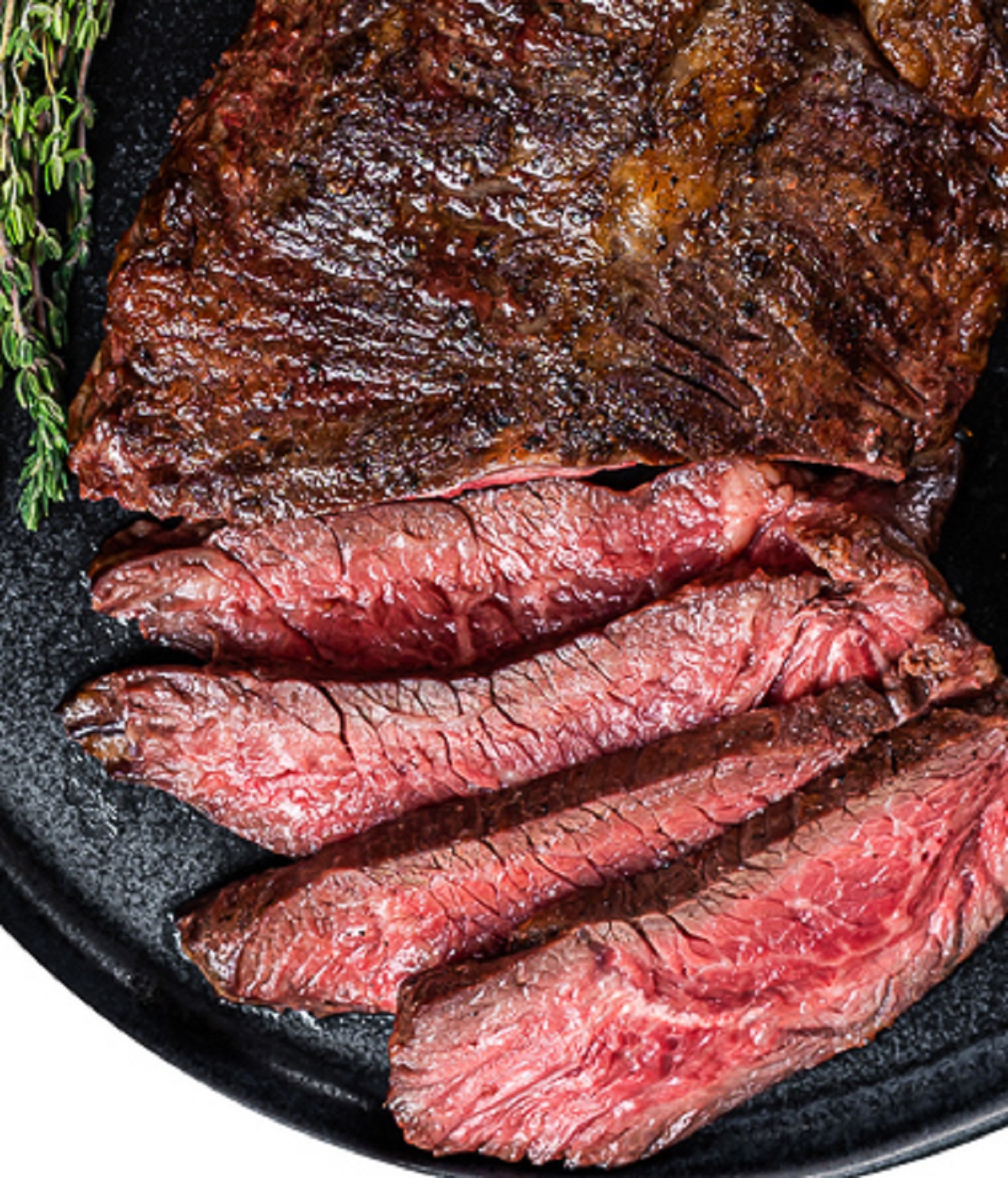
What To Serve With Steak
Colleen Kennedy is the author of 3 cookbooks and has appeared on QVC and other shows inspiring home cooks of all levels. She has a successful TikTok channel (@Colleen'sCooking). Colleen lives in Pennsylvania with her husband and kids, she started this food blog in 2009.
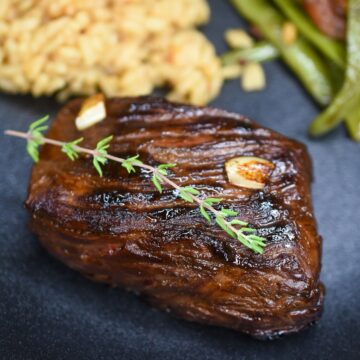
Bavette Steak
Ingredients
- 2 Bavette steaks
- 2 teaspoons avocado or olive oil
- kosher salt
- black pepper
- ½ TBS butter
- 1 clove garlic, sliced (a nice big clove)
Instructions
- Pat steaks dry witrh paper towels and allow you steaks to sit on the counter to take some of the chill off for 30-40 minutes (depending on thickness of steaks).
- Just before cooking, rub your steaks down with a small amount of avocado or olive oil and season well with kosher salt and black pepper OR your favorite steak seasoning.
- Heat a cast iron pan or heavy bottomed pan on high until pan is very hot, place steaks in pan and cook for a few minutes per side (cook time depends on thickness of steak and desired doneness.
- Lower heat to med-high, Add ½ TBS or more of butter a minute after flipping steaks. Just before finisheing, add garlic and flip steaks one more time so the other side gets a bit of the pan juices/butter.
- If you wish to add a few splashes of Worchestershire sauce do so when you add the garlic.
- Use a meat thermometer for correct doneness - Medium Rare: 125 degrees - 135 Medium: 140 degrees Medium Well: 150 degrees. Well Done, just NO, it is not good for this cut of steak. Remember as you let the steak rest (on a plate not the hot pan), the internal temperature continues to rise.
- After steaks have rested 5 or so minutes (allowing juices to redistribute), enjoy! Save any juice that runs out or is in the pan and pour over plated steaks.


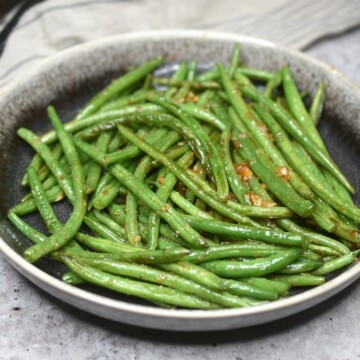
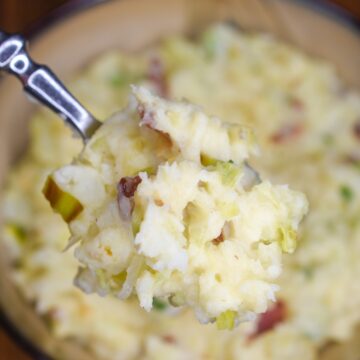
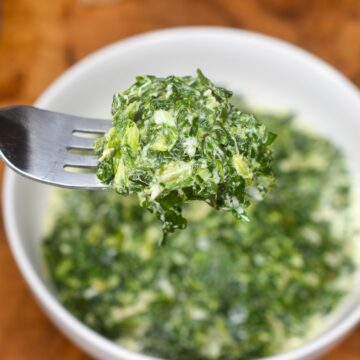
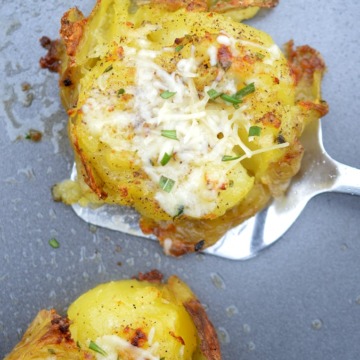
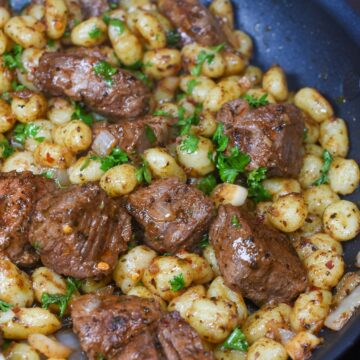
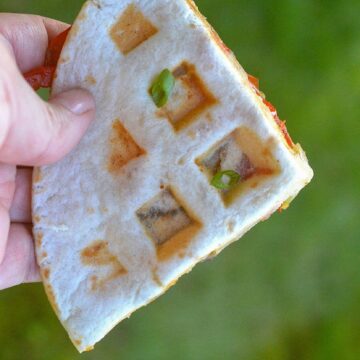
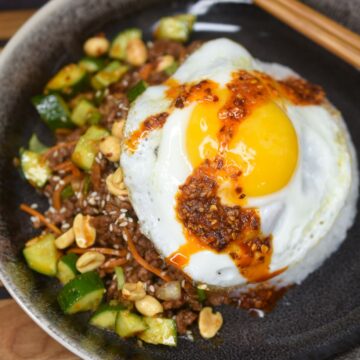
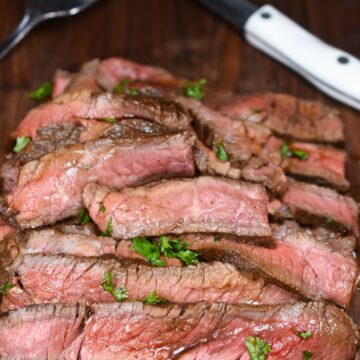
Leave a Reply